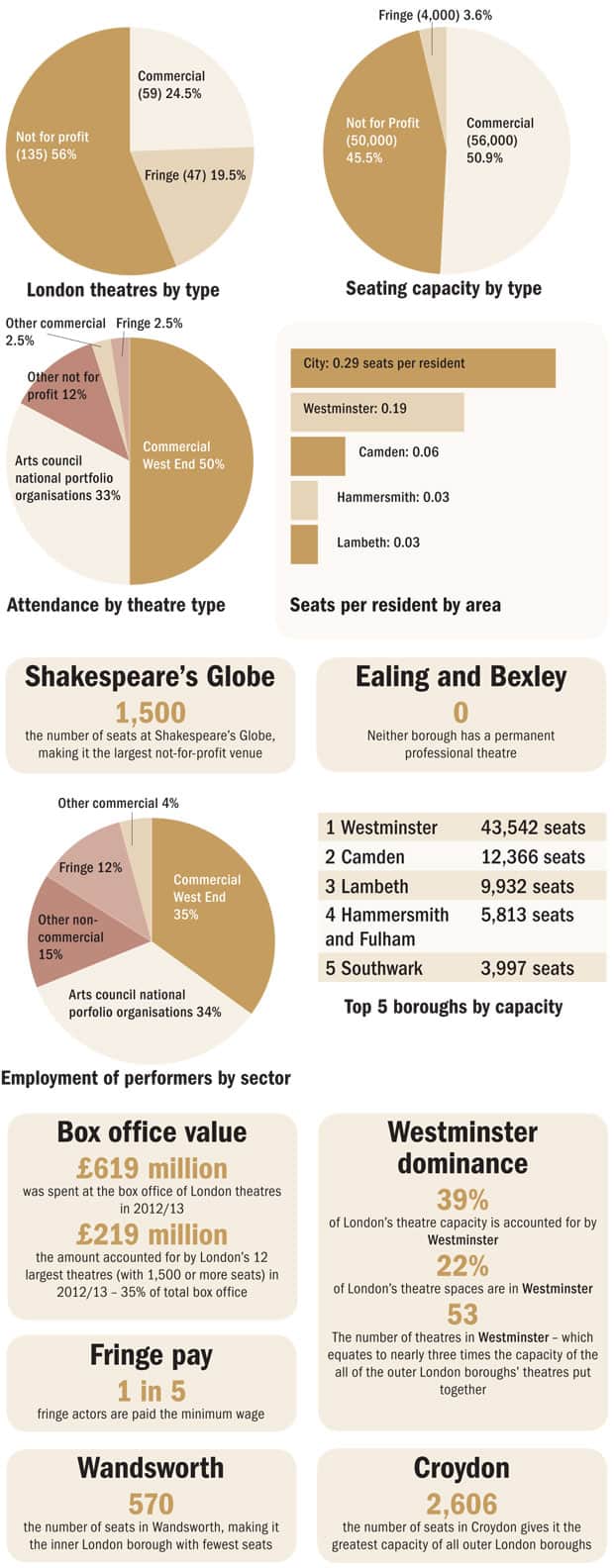 This week saw the publishing of the first major report in the size and breadth of London’s theatre scene. The aim of the report is to provide policymakers with a complete picture of the theatre landscape in Britain’s capital, and some of the headline stats are pretty impressive. The total takings for 2012/13 were £618.5 million, meaning the theatre outperformed cinemas in the capital. Furthermore, London’s Westend is outperforming Broadway, taking £403 million in 2012/13, 20% more than its American counterpart. This means London has a convincing claim for calling itself the theatre capital of the world.
This week saw the publishing of the first major report in the size and breadth of London’s theatre scene. The aim of the report is to provide policymakers with a complete picture of the theatre landscape in Britain’s capital, and some of the headline stats are pretty impressive. The total takings for 2012/13 were £618.5 million, meaning the theatre outperformed cinemas in the capital. Furthermore, London’s Westend is outperforming Broadway, taking £403 million in 2012/13, 20% more than its American counterpart. This means London has a convincing claim for calling itself the theatre capital of the world.
The introduction to the report states: “We knew London theatre was big. This report quantifies how big: 241 theatres with more than 110,000 seats. We knew lots of people went to the theatre in London every year, this report tells us how many (more than 22 million in 2012/13) and where those audiences are focussed. We knew London theatre was a big employer, this report gives us a reliable estimate of how many people are employed at any one time. We knew London theatre took millions at the box office. This report tells us how many millions: £600 million.”
Whilst the report contains alot of good news for denizens of London’s art scene, there are a few sour notes. Firstly, many of the heritage theatres are listed buildings, which provides its own set of challenges. The dramatic collapse of the roof of the Apollo Theatre mid-performance last year is a testament to this fact. There is also a very clear divide between inner and outer London, with the boroughs Westminster, Camden and Lambeth accounting for 92% of theatre attendance between them.
(Infographic of the headline stats; click to enlarge. Source)
Thirdly, and perhaps unsurprisingly, show business in London doesn’t pay well. As the report remarks, “The employment chapter of this report certainly throws up the spectre of low pay or no pay work (if one can call it that) within the London fringe sector. The vast majority of roles within this sector are not being paid national minimum wage, revealing that as well as subsidy from the government, at the bottom end, the London theatre sector as a whole is being subsidised by people giving up their time for no or little pay. Whether this is a desirable state of affairs or not – a shining example of Big Society or exploitation of an industry where workforce supply outstrips demand – is something of a moot point.”
Still, the report shows that the theatre scene in London is alive and well, and continuing to grow- attendance rose in both 2011/12 and 2012/13. It’s also good to see a more diverse range of industries taking a data-driven approach, and furnishing policymakers with cold hard facts to support an industry that is not only profitable, but culturally vital.
Read the report for yourself here.
(Image credit: Andy Bird)
Interested in more content like this? Sign up to our newsletter, and you wont miss a thing!
[mc4wp_form]





